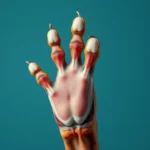
Introduction
Dog health care is a crucial aspect of pet ownership, encompassing everything from nutrition to regular veterinary check-ups. One condition that dog owners may not be familiar with is SARDS in dogs, or Sudden Acquired Retinal Degeneration Syndrome. This serious condition can lead to significant vision loss in dogs, and understanding its symptoms, causes, and treatment options is vital for any dog owner.
Understanding SARDS
Definition of SARDS
SARDS is a relatively uncommon but serious eye condition that leads to sudden blindness in dogs. It primarily affects the retina, which is the layer of tissue at the back of the eye responsible for converting light into visual signals. In dogs diagnosed with SARDS, the retina degenerates quickly, leading to severe vision impairment or complete blindness.
Statistics reveal that SARDS tends to occur more frequently in middle-aged dogs, particularly those between the ages of 7 and 12 years. Although the exact prevalence of SARDS in dogs is not well-documented, it is considered to be a rare condition within the veterinary community.
How SARDS Affects Dogs
The impact of SARDS in dogs is profound, as it leads to a rapid decline in vision. Many dogs may struggle to navigate familiar environments and may exhibit signs of confusion and disorientation. The loss of vision can significantly affect a dog’s quality of life, as they rely heavily on their sight for everyday activities and interactions with their surroundings.
Symptoms of SARDS in Dogs
Early Signs to Look For
Recognizing the early symptoms of SARDS in dogs can help facilitate timely intervention. Some of the initial signs to observe include:
- Sudden changes in behavior: If your dog starts acting differently, such as seeming more anxious or withdrawn, it could be a sign of vision problems.
- Increased bumping into objects: Dogs with vision issues may frequently bump into furniture or walls, indicating they are struggling to see their environment.
- Changes in activity levels: A previously active dog may become less interested in play or outdoor activities if they are experiencing vision difficulties.
Advanced Symptoms
As the condition progresses, more pronounced symptoms may develop, including:
- Complete loss of vision: Dogs may become entirely blind, which can be distressing for both the pet and the owner.
- Signs of anxiety and disorientation: Blind dogs may exhibit increased anxiety, such as pacing or whining, as they navigate their surroundings without sight.
- Changes in appetite or interaction with family: A dog that is losing its vision may begin to withdraw from family interactions or show a lack of interest in food.
Causes of SARDS
Potential Triggers
The exact cause of SARDS in dogs remains largely unknown; however, several potential triggers have been identified:
- Genetic factors: Certain breeds may be predisposed to developing SARDS, although specific genetic markers have not been conclusively established.
- Hormonal imbalances: Research indicates that spayed female dogs may be at a higher risk of developing SARDS, possibly due to hormonal changes.
- Other medical conditions: Underlying health issues, such as Cushing’s disease or autoimmune disorders, may also contribute to the development of SARDS.
Theories and Research
Current scientific understanding of SARDS in dogs continues to evolve. Ongoing research aims to uncover the underlying mechanisms that lead to retinal degeneration. Studies are investigating the role of genetics, immune response, and environmental factors in the onset of this condition.
Diagnosis of SARDS
Initial Veterinary Consultation
If you suspect your dog may be exhibiting signs of SARDS, it’s crucial to schedule an appointment with your veterinarian. A comprehensive eye examination is essential for diagnosing this condition. During the consult, be prepared to discuss your dog’s behavior, any changes you’ve noticed, and their medical history.
Diagnostic Tests
Veterinarians may recommend several diagnostic tests to confirm a diagnosis of SARDS in dogs. One key test is the electroretinogram (ERG), which measures the electrical activity of the retina in response to light. This test can help determine if the retina is functioning correctly. Other tests may include:
- Fundoscopy, to visually inspect the retina.
- Blood tests, to rule out underlying health conditions that may contribute to vision loss.
Early diagnosis is critical as it allows for timely management and support for your dog.
Treatment Options for SARDS
Immediate Actions
If SARDS is suspected, the first step is to ensure your dog is safe. Create a secure environment by removing obstacles and providing familiar items. Supportive care measures, such as using a harness for walks, can help your dog navigate safely.
Long-term Management
Currently, there is no definitive cure for SARDS in dogs; however, several approaches can help manage the condition:
- Medications: While there are no specific medications approved solely for SARDS, your veterinarian may prescribe medications to address any underlying health issues or manage anxiety.
- Regular veterinary check-ups: Consistent follow-ups with your veterinarian are essential to monitor your dog’s condition and adjust treatment as needed.
Alternative Therapies
In addition to conventional treatments, some dog owners explore alternative therapies to enhance their pet’s quality of life. These may include:
- Acupuncture: Some studies suggest that acupuncture may help alleviate anxiety in blind dogs.
- Supplements: Omega-3 fatty acids and antioxidants may support overall eye health.
- Diet adjustments: Providing a balanced diet rich in vitamins can contribute to your dog’s general well-being.
Living with a Dog with SARDS
Adjusting to Vision Loss
Caring for a dog with SARDS in dogs requires adjustments to their environment and routine. Here are some strategies to help your dog adapt:
- Creating a safe environment: Remove sharp objects, use baby gates to block off stairs, and keep furniture in consistent places to help your dog navigate safely.
- Training and behavioral adjustments: Consider using verbal cues or touch commands to guide your dog. Training your dog to respond to sound or scent can also be beneficial.
Emotional Support for Owners
Dealing with a dog diagnosed with SARDS can be emotionally challenging for pet owners. Here are some coping strategies:
- Coping strategies for pet owners: Connecting with other dog owners facing similar challenges can provide comfort and advice.
- Resources for support: Look for online communities or local groups that focus on pet health and support for owners of visually impaired dogs.
Preventive Measures
Regular Veterinary Check-ups
Routine veterinary visits are essential for maintaining your dog’s health. Regular eye exams can help detect early signs of potential problems before they escalate.
Nutrition and Lifestyle
A balanced diet plays a crucial role in your dog’s overall health. Ensure your dog receives:
- Nutritional support: Feeding high-quality dog food rich in essential nutrients can help maintain eye health and overall vitality.
- Importance of exercise and mental stimulation: Regular physical activity and mental challenges keep your dog engaged and can help reduce anxiety.
Conclusion
Understanding SARDS in dogs is vital for dog owners who want to ensure their pets lead happy, healthy lives. By recognizing the symptoms, causes, and treatment options available, you can take proactive steps in managing this condition. Regular veterinary care, proper nutrition, and a supportive environment are essential components in caring for a dog with SARDS. Stay informed and attentive to your dog’s health to provide the best possible care.









